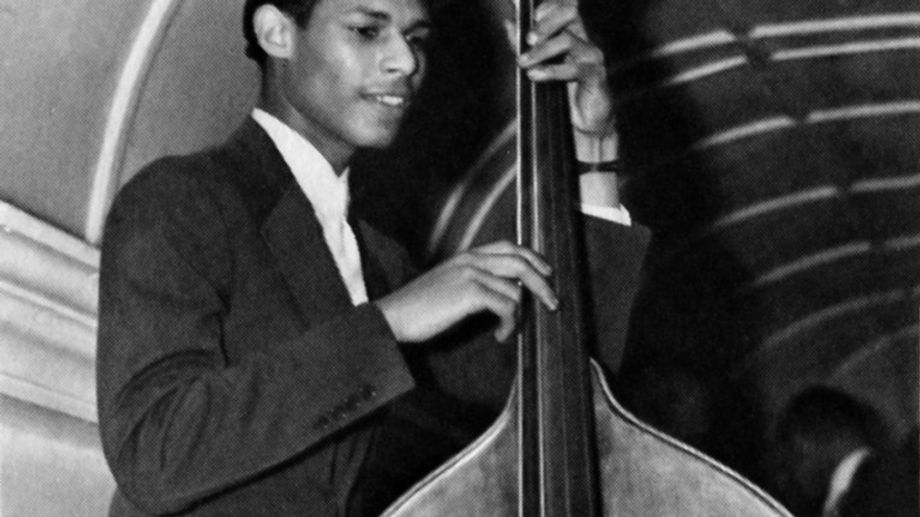
Jimmy Blanton
"Ellington's Bass"
Early Beats
Jimmy Blanton was born in 1918 in Chattanooga, Tennessee. He originally learned to play the violin but took up the bass while at Tennessee State University. Blanton started to play the bass professionally in local Chattanooga groups led by his mother, a pianist. After briefly attending Tennessee State College, he moved to St. Louis where he joined the Jeter-Pillars Orchestra and Fate Marable's Riverboat bands, where Duke Ellington heard him and added him to his band. Blanton's arrival helped spur the Ellington band into a major creative phase, and the young bassist created some of the first important bass solos in jazz in such Ellington compositions as "Ko Ko," "Jack the Bear," and "Concerto for Cootie."

Blanton and Duke

Duke Ellington put Blanton front-and-center on the bandstand nightly, unheard of for a bassist at the time. Such was his importance to Ellington's band at the time, together with tenor saxophonist Ben Webster, that it became known as the Blanton–Webster band. Blanton also played in the "small group" sessions led by Barney Bigard, Rex Stewart, Johnny Hodges, and Cootie Williams in 1940-41.
When with the Jeter-Pillars Orchestra, Blanton added classical music pizzicato and arco techniques to jazz bass, making it into more of a solo instrument. While with Ellington, Blanton revolutionized the way the double bass was used in jazz. His virtuosity placed him in a different class from his predecessors, making him the first master of jazz bass and demonstrating its potential as a solo instrument.
Blanton's Sound
While with Ellington, Blanton revolutionized the way the double bass was used in jazz. His virtuosity placed him in a different class from his predecessors, making him the first master of jazz bass and demonstrating its potential as a solo instrument. "He possessed great dexterity and range, the roundness of tone, accurate intonation, and above all an unprecedented sense of swing." He added, "many non-harmonic passing notes in his accompaniment lines, giving them a contrapuntal flavor and stimulating soloists to their own harmonic explorations." His originality was developed by others into the foundations of the bebop rhythm section. His importance was such that, "until the advent of the styles of Scott LaFaro and Charlie Haden in the 1960s all modern bass players drew on his innovations."
